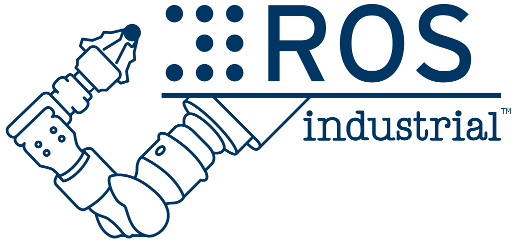Robotiq's Adaptive Robot Gripper Now on ROS-Industrial

Posted on Aug 10, 2012 in Robot Grippers
2 min read time
A few months ago, I wrote a blog post on ROS-Industrial, an open-source software in industrial robotics. From my experience in research, I have learned that collaboration between academics and industry is one of the best ways to leverage good ideas into innovative (and potentially game changing) technologies. In the context of robotics, ROS (Robot Operating System) is a good example of a broad collaboration between researchers, manufacturers and end-users. For this reason, I am pleased to announce that Robotiq recently released a ROS stack for controlling its Adaptive Robot Grippers.
.jpg)
What is ROS and ROS-Industrial?
ROS is a collection of libraries and tools which help robot programmers to innovate by using the work of others. One key aspect is the standardization of the way software "nodes" exchange data. This allows experts in certain fields to develop specialized software packages and make them easily usable by non-experts. Building robots mainly consists of the integration of various devices and as such, it is very important to minimize the integration time (and cost) required to develop new applications. Think about adding a stereo camera to your robot to let it recognizes objects? There are many packages on ROS to help you do just that! One last thing: ROS is free. This means no fees or royalties whatsoever and you can modify it the way you want, even for commercial use.
ROS-Industrial is a software project which aims at bringing the power of ROS to industrial applications. Industry can certainly benefit from the advances of robotics research contained in the hundreds of ROS packages. However, industrial robots require a high level of reliability which is not necessarily present in research prototypes. ROS-Industrial is therefore planning to make robust industrial devices compatible with ROS to help foster innovation in the manufacturing industry.
What can the Robotiq Stack do?
The Robotiq stack contains drivers for controlling our Adaptive Robot Grippers (both models). For now, it is only compatible with the Modbus TCP protocol, but it is our goal to extend it to other communication protocols in the future. The driver node is connected to the Gripper and constantly publishes its status (position of the fingers, object detection, etc.) to the other nodes listening to it. It also listens for commands sent by other nodes and transmits them to the Gripper. The stack contains example nodes for controlling the Gripper and listening to its status. As you can see from this small tutorial, controlling a Gripper with the Robotiq stack is quite easy.
The driver node can be controlled using all the command variables of the Gripper. All options are therefore open to the user. Also, the example nodes (even the driver node) can be modified at will to suit any specific requirement. That is the beauty of open source software!
If you consider using an Adaptive Robot Gripper with ROS, do not hesitate to contact us. It will be our pleasure to answer your questions.
I would like to personally thank Shaun Edwards from Southwest Research Institute (SwRI) who helped me in the development of the Robotiq stack. Thanks Shaun!


.jpg)





Leave a comment